Soul of the Forest Eau de Parfum by Maison Martin Margiela Review
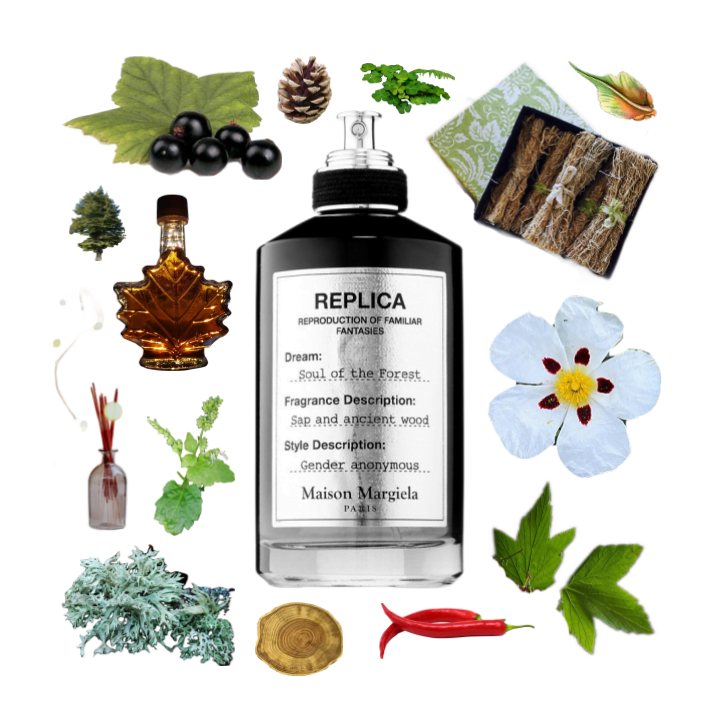
Knowing the Replica line, I’d expected Maison Martin Margiela’s Soul of the Forest to be a recreation of a damp, mossy coniferous forest (or at least, a crude and quickly-evaporating imitation of one).
Instead, I got a very dark, inky, astringent sort of scent that doesn’t bring to mind an actual forest at all. This is more abstract than most Replica concoctions, and somehow more ephemeral to boot.
In the bottle, the first word that comes to mind for me is “astringent.” This feels like sanitary alcohol and a clean white doctor’s office.
It’s not a scent reminiscent of the smell of any kind of scented alcohol cleaning wipe like the lemon or cinnamon wipes I smell in some Guerlain scents. Nor does it feel toxic or medically frightening the way salty, bloody, metallic notes can feel, like those in Mugler’s Womanity or, to a far lesser extent, in Hermès’ Un Jardin sur la Lagune. And it definitely isn’t like the soft, sweetened pediatric-ward hospital smell I get from the mixture of sweet powder, violet soap, piquant black pepper and buttery heliotrope in Lacoste’s Lacoste Pour Femme.
Rather, the effect of the fragrance as a whole feels astringent like alcohol and cleanliness. This feels like something you’d smell in the air in a slightly more naturalistic sort of hospital with less paper and plastic smells and a bit more of a seeping dark undercurrent. It’s not bright or intense in a way that burns your nose off — nothing in Soul of the Forest is — but rather, the predominating shape is one of cleanliness and order.
Calling this a clean scent doesn’t feel right. I usually associate that with something like soapiness. But it’s very neat and orderly, sanitized with alcohol rather than soap.
Soul of the Forest is a rather linear composition. There are almost no surprises; most notes rear their heads immediately in the opening and fade progressively from then on at various rates. The exception, surprisingly, is the mix of cedar and balsam fir, the only actually greenish woody accord in this forest-themed scent, which I’d expected to be front-and-center from the beginning. Instead, these appear only briefly a couple of hours in (on me, at least).
On skin, the first note that pops out at me is no one note at all, but a general aura of dark, inky vetiver and oakmoss.
When I say dark, I don’t mean gloomy or depressing. Soul of the Forest is well-balanced in line with designer expectations. It’s not going to go some experimental indie niche perfumer route and serve up something consumers might find too dour or gross, hence the very light hint of oakmoss and solid dose of universally likeable sweetness here.
Rather, there’s a color to the vetiver here that feels aesthetically black and inky rather than fresh and crisp, green and alive. This doesn’t feel at all like a fresh classic vetiver aftershave.
However, neither does it feel gloomy and grim. This is black like an upper-middle-class teenager’s room that’s tastefully painted black, with matching bedspread, pillows, and nightstand, and warm yellow twinkle lights along the ceiling. Our teen, an MCR-listening Catholic school boy named Edward, wanted something black like his soul, but instead his parents gave him a room that’s ready to be photographed for Better Homes & Gardens. Sure, there’s a potentially broody aesthetic idea here, but it’s executed in a neat and likeable way that’s entirely inoffensive.
The oakmoss here really does act more like a top note than an anchoring bottom note. This isn’t at all green and mossy, and doesn’t feel at all like a chypre; the oakmoss doesn’t stick around as more than a half-imagined whisper past the opening. It adds a little density and texture to the background for the first few minutes, but then quietly bows out.
No, the color and timbre of this are more defined by the vetiver. On the scale from Guerlain’s eponymous Vetiver, with its crisp hot-grass-drying-in-the-sun nuances and vintage aftershave-y texture, to the dark, inky, dripping, artificial, industrial black ooze vetiver of Lalique’s Encre Noire, this definitely leans much more towards the latter. It isn’t quite as drippy, opaque and artificial, dense and heavy like black paint, as Encre Noire; the texture and weight is different, but the color is the same.
I’d sought out Soul of the Forest in search of a realistic (or realistic-ish) green and coniferous woody forest scent. Instead, this is a lighter, translucent, slightly more natural-feeling Encre Noire type of black vetiver inky base with a few things peppered on top.
You’ll notice this review is going to be full of words like “light” and “translucent.” This is a texture thing, but it’s also hard for Soul of the Forest to be anything else when it’s practically an instant skin scent.
The projection and sillage here are extraordinarily faint from the very first few minutes. It doesn’t feel as faint and undetectable to me as Encre Noire does — but then, I suspect that’s something due to an over-reliance on Iso E Super, which I don’t pick up very well — but I instantly have to stick my face right up to my arm to pick up any of this perfume.
The first really prominent note to float above the backdrop is a spicy pepper note. It feels sharper, crisper, spicier than something like delicate pink pepper, far less dry than black pepper. No, this feels red, and vegetal, like a fresh, crisp red spicy pepper.
The word pimento instantly comes to mind, and that’s exactly what this is: a fresh and crisp, small, red, incredibly spicy little pepper. It’s not so vegetal as to bring a salad vibe into the mix, but it’s the juiciest moment of Soul of the Forest, feisty and sparkling.
It’s not fiery in a way that burns your nose or throat at all. It’s spicy in a very safe way — or perhaps in a Safeway, where you might pick up and ponder a pretty piquant pepper in the produce section — like a whiff of the very spicy dish your friend at dinner ordered which you can ooh and aah at without actually trying it.
The spicy fresh red pepper note only sticks around for ten to fifteen minutes at the opening of Soul of the Forest, but it’s a lovely pleasant sparkle, a kick of life in a scent so often devoid of it in favor of dark moody dripping vetiver.
Walking down the street in the cool November wind, another singing top note whirls out at me. It feels like sticky sweet maple syrup, but light and flitting, not cloying or heavy or at all gourmand. This is like diet maple syrup, maple syrup lite, with a consistent maple texture and a level of sweetness that comes and goes but never descends at all towards crystallized maple sugar.
This is what the ad copy calls a maple sap note, though I’d call it a very light and faintly sweet sort of maple syrup, less sugary and sticky. Like everything else in the Soul of the Forest, it’s relatively light and gauzy, flitting unpredictably in and out of the scent at a whim.
Throughout the first half hour or so, the maple sap note comes and goes as it pleases. After that point, it fades into a consistent hint of light yellowish sweetness in the background, softening the Soul of the Forest slightly until two hours in, when it all but disappears.
There’s also a certain creaminess that grows steadily behind the maple sap. It’s not at all unctuous or buttery or excessively damp, but rather a slowly growing rich, soft, sweet creamy texture in the background.
It’s blended in a way that ties it closely to the maple sap, but this is the hint of white labdanum. The thick, velvety smoothness of the note is utterly delicious. It’s quiet, just like every other note here, but if the maple note gives the sweet accord its mapleyness, the labdanum gives it dimension and body, a whisp of fullness that’s more satisfying than a flat flash of maple candy.
The labdanum melts in your mouth a little. It’s what brings to mind imagery of pancakes and waffles, of the general comforting mildly sweet aura of cooking breakfast foods. Soul of the Forest is never at all gourmand, but that labdanum-blended maple sap note does feel tasty and a little bit edible.
This sweetness is the string of warm-colored yellow twinkle lights in our friend Edward’s too-tidy new black bedroom.
It’s a brilliant thing to combine with the red vegetal sharpness of the pimento pepper. I want to taste these notes together. This feels like a great combo in the same way that jams and preserves made with savory ingredients like chili peppers, onions, and bacon have been on the rise lately. I’ve tried a maple-onion bacon jam and several different chili-pepper-and-raspberry jams, and this combination in Soul of the Forest reminds me of both. It makes me want to look up recipes with maple syrup and red hot peppers.
The combination of distinct, comforting maple sweetness with a hint of whipped labdanum smoothness and the living, breathing ruby piquancy of pimento is fluffy yet sharp, melty yet spicy, smooth and buttery while dancing and kicking on your tongue. It’s a simple enough combination, but in my opinion it’s the best and most original idea in Soul of the Forest.
This blend of maple sap, with its distinctive yellow maple syrup edge gradually fading away in strength but never entirely disappearing, and warm white labdanum continues to grow in the background during the entire lifetime of Soul of the Forest.
I don’t get anything I recognize as black currant in this, but I grew black currants growing up and thus counterintuitively have a really hard time putting my finger on the artificial stretch of a note most perfumers call black currant.
When I asked what he thought, my boyfriend remarked that something about this was fruity (while also mentioning that it’s “green spicy… no, brown spicy” and picking out the pepper right away; he’s really getting quite good for an indulgent significant other of a fraghead!) so it may come across slightly and vaguely to some, perhaps more precisely to others, and none to me.
Perhaps there’s something of the black currant or of its cassis leaves here coloring in the green freshness, but there really isn’t so much of that to go around. Apart from the cedar and fir, the aromatic and green notes were of a muted, inky, dark and compressed sort of caliber. There’s certainly no tomato-leaf-fresh black currant here like that which shapes Diptyque’s beautiful L’Ombre Dans L’Eau, bursting with greenery and freshness and cool summer dew.
An hour and a half in, the cedar becomes increasingly apparent in the base. I’m often rather anosmic to cedar — or maybe just don’t often notice it when it’s a faint obligatory and uninspired base note — but I can pick it up here. It’s a fresher, crisper, greener sort of woody moment than anything I’ve seen previously in Soul of the Forest.
For me, the cedar is bonded closely with the balsam fir, a note I hadn’t picked up until now and was assuming just wouldn’t show up. But worry not! Never fear, the fir is here. It just takes a while to develop.
One and a half to two hours in is the first moment when any of this feels woody and green in a way that might remotely approach the smell of something in a forest. Whereas the oakmoss is an ephemeral bitterish denseness and the vetiver is a vague, inky black atmosphere piece, the cedar and balsam fir accord has something actually green to it, and a woodiness that feels even remotely genuine rather than being an abstract idea.
The balsam fir feels almost like pine, but a little lighter, a little gentler, less cold and prickly. It’s still cool, but breezier, with less freezing edges that make you think of Christmas.
Though I suppose most of the most popular trees used as Christmas trees are actually firs, including balsam firs, counterintuitively pine seems to make me think of winter holiday tidings and snow and biting cold far more than fir does. I think it’s a cultural thing, with far more candles and room sprays and air fresheners and wreaths going the more distinctive pine route during the holiday season instead of smelling like actual fir. This just feels like a coniferous forest without bringing any intense punch of holiday associations, which I think was a wise and very careful move on MMM’s part to keep from relegating this to a seasonal offering.
Rather than accentuating the coolness of the black atmospheric vetiver, the fir brings something to the composition that feels fresh and green and truly alive. It really drives home how dark and quiet and dead the rest of the Soul of the Forest is.
Maybe there’s something there, some metaphor about climate change and how any moment of greenery and growth in the heart of a forest is ephemeral, and it’s rare that there’s a breath of life in the soul of the forest.
Or maybe this is just blended in a way that doesn’t highlight the balsam fir, at least on me.
It feels like the cedar and fir spark to life for just a few minutes somewhere between one and a half and two hours in, then wink back into silence. I get whispers of them here and there through the drydown, but the accord is far from consistent, flitting the way the maple sap did in the opening.
This feels like the faint flickering of tiny plants trying to grow in a dead woodland before promptly wilting, over and over again. It just doesn’t feel like there’s much soul in this forest at all. I just watched Studio Ghibli’s Princess Mononoke for the first time last night, and Soul of the Forest makes me think of the look of a forest that lacks a living Forest Spirit, that goat-elk-thing with a weirdly human red face, keeping it alive and thriving. It makes me think of dead, gray woods of little growth.
To my nose, nothing about this feels soulful, lush, or very much alive at all.
At this point the darkness of the background of vetiver starts to feel just a little smokier. This is a whisp of incense, which perhaps has colored the vetiver just a hint throughout, but it’s never felt prominent enough to notice until now. Even now, I notice the incense only when I squint; it’s not prominent at all. A hazy gray outdoor smoke, there’s no particular wood or flower or resin or style folded into this incense. It’s just a hazy texture of gray layering into the inky dark vetiver background.
Is there patchouli in here somewhere? Maybe. I’d believe it’s folded into that murky background somewhere, but it doesn’t jump out at me.
The linear unfolding continues. By three to four hours in, the black inky vetiver backdrop has finally faded away, and all that remains is the mildly sweet, mildly yellowish muddle of faint maple syrup sap and soft, creamy white labdanum. The sweetness is nice and subtle, like the creamy woody sweetness of oak of the smell of your own skin at the bottom of a particularly bitter chypre.
That hint of barely-there creamy-sweet maple sap sticks around on this skin for a little longer, but you really need to strain to get at it. Past the five hour mark, I’m not entirely sure whether the tiny whisper of it I’m detecting is actually there or I’m simply imagining it.
This doesn’t necessarily feel artificial in a super heavy way, like plastic or dense perfumeyness. It’s light and thin, both in volume and composition, like an incredibly fine, translucent piece of satin. It’s not real silk, it’s got some pills on it, but it’s thin and drapes nicely and when you drop it, it floats prettily to the ground.
Sometimes perfumes trying to be naturalistic and imitate green and earthy things make their own limitations all the more obvious in the imitation. In an uncanny valley of perfumery, the few molecules that feel vaguely right make it incredibly apparent how unnatural and perfume-y it all is compared to the smell of the real outdoors. This is an effect present even in my favorite naturalistic green scents, like Philosykos (though Olivia Giacobetti’s style does lend itself to cleaned-up and freshened imitation greens).
This effect, it turns out, is not a concern here, as nothing here smells even a little bit literally like a forest. Sure, there’s a metaphorical idea here of inky darkness, of translucence, of damp, but Soul of the Forest isn’t trying to be photorealistic in the slightest.
I do respect a good commitment to an abstract idea. The composition here definitely has an idea at the center that’s mildly interesting, interpretive, and fresh.
Sure, the Encre Noire black oozing vetiver thing has been done before, and an entire decade before Soul of the Forest to boot. What’s original here is the addition of sweet maple syrup, a dash of pimento pepper, and an occasional whisper of green balsam fir.
I like these inspired additions, but they feel like faint spices topping off an already incredibly faint composition. The mixture is nice, but it’s all so barely-there, and balanced out in such a way that this just feels like a weird, weak flanker for Encre Noire, heavy on uninspired dark vetiver and too light on the interesting finishing touches.
Clocking in at five hours, the performance of Soul of the Forest is poor. Its projection is near skin-scent level from the beginning, and its sillage is nonexistent.
I tend to wear very conservative amounts of fragrance and enjoy intimate projection, and I’m known to be generous when it comes to these things if it’s an interesting scent. But this is truly abysmal performance.
Are there exceptions? Sure. Am I being a little bit of a hypocrite? Undoubtedly. I adore Diptyque’s Philosykos despite the fact it lasts a paltry four hours. But that’s a fundamentally delicate composition where the performance feels thematically appropriate, and the projection is stronger, the composition more cohesive and distinct. I think even dainty Philosykos projects much louder on my skin than the ridiculous instant skin scent that is Soul of the Forest.
Something like Philosykos doesn’t feel like it’s gone way too soon because everything about it is delicate like snapping twigs and fresh green leaves underfoot in the rain.
Soul of the Forest doesn’t have that aesthetic privilege. Here, there are heavier, clunkier pieces like that dark vetiver and bitter oakmoss at play that really feel like they should last longer. By the end, all I can smell is a hint of sweet yellowish labdanum, a development that feels less like inspired storytelling and more like all the other notes just gave up way too early.
If Soul of the Forest were more compelling and blended in a way that feels heavier on the lighter notes and vice versa, five hours would be enough. But as it were, I have no idea why a predominantly industrial vetiver Eau de Parfum should fade so fast, and I have no reasons to excuse it.
Yes, this is an Eau de Parfum. Its performance would be kind of weak but more understandable for a light Eau de Toilette, but this is an Eau de Parfum, and from Maison Martin Margiela’s premium black-bottle line, no less.
“Replica Collection: Reproduction of Familiar Fantasies” is a series of pricier Eau de Parfum spins on MMM’s Replica line gimmick, but I’m not seeing anything here that justifies this costing any more or being distinguished from the regular Replica series of Eau de Toilette scents. Under the Lemon Tree, By the Fireplace, Whispers in the Library, Jazz Club… all of these far outlasted Soul of the Forest and had better projection and sillage.
The composition here is a bit more abstract than those more literal scenic Replicas, but more abstract doesn’t necessarily mean better. I appreciate that there’s a level of abstraction and creative vision here that wasn’t there for some more literal Replica scents, but that doesn’t change the fact it’s a sort of uninspired composition that might be worth distinguishing if it were loud and lasted, but it isn’t, and it doesn’t.
Honestly, I think I’m more put off by how quiet this is than by how quickly it disappears entirely. This is one of the faintest fragrances of any concentration I’ve ever smelled, and I don’t think it’s a personal anosmia issue, as others had a really difficult time picking this one up as well, even immediately after I had applied it.
Considering the performance and projection, Soul of the Forest simply isn’t worth the MMM black bottle series price tag. It honestly isn’t worth the regular Replica series price tag to me either, but at least there it would be at home among a few other fleeting and faint experimental compositions. The performance here is just ridiculously poor for an EdP, and there just isn’t enough of a compelling original idea here for me to forgive that.
All in all, an overpriced and fleeting exploration of a few interesting ideas layered on an overdone black industrial vetiver. On me it’s inoffensive and mildly likable, but incredibly faint and not particularly interesting. I don’t need my perfumes to be super loud or last forever, but this is so quiet from the very beginning it’s criminal, and ultimately doesn’t wow me enough to excuse that.
If you like inky vetiver and are intrigued by the dressings and garnishes Soul of the Forest adds on top, you should give it a try. Otherwise, this is a skippable stop on the quest for the perfect ancient forest scent.
Where to Find Soul of the Forest Eau de Parfum by Maison Martin Margiela
You can find samples, decants, and full bottles of Soul of the Forest EdP at Scent Split.
Do note that it has been discontinued and has been getting harder to find. If you’re fond of dark, moody vetiver forests tinged with sticky maple syrup, you’ll want to try this one while you still can.
This is an affiliate link. If you click on it and buy something, the seller pays me a commission, at no extra cost to you. You can learn more about them here.

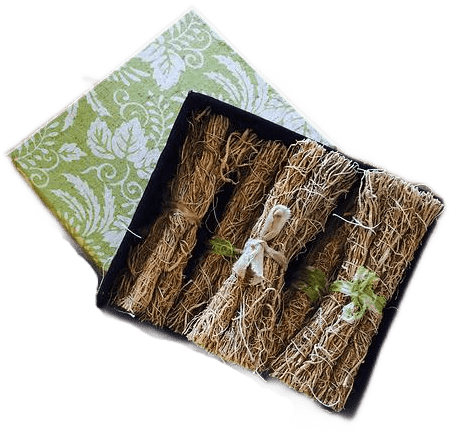
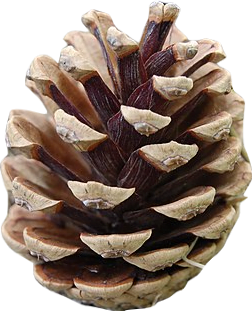

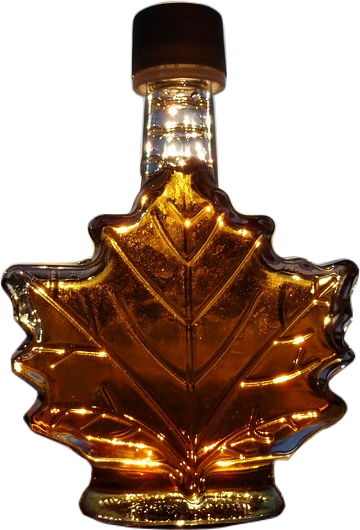
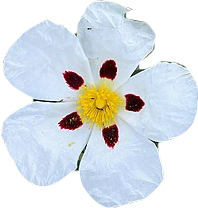
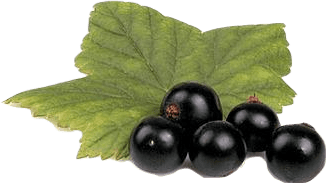
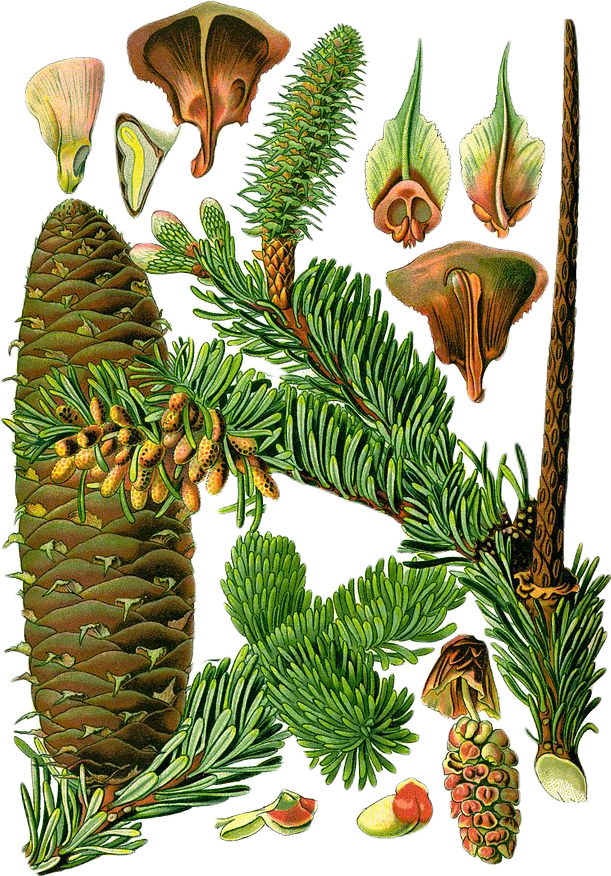
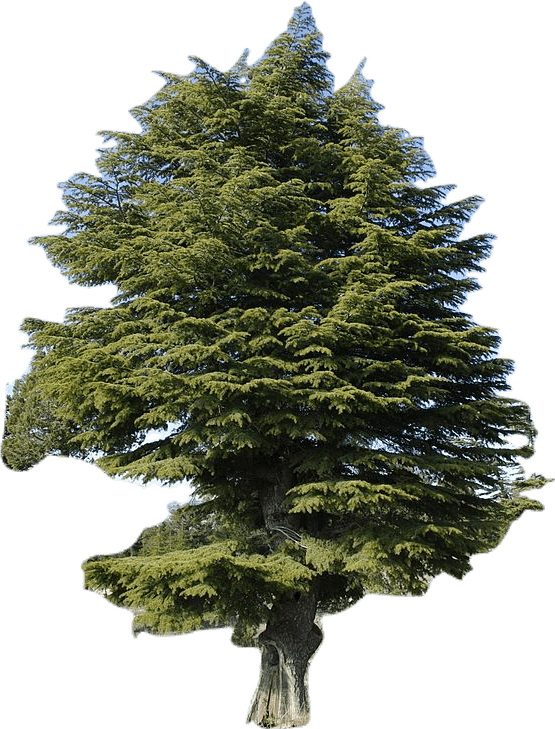

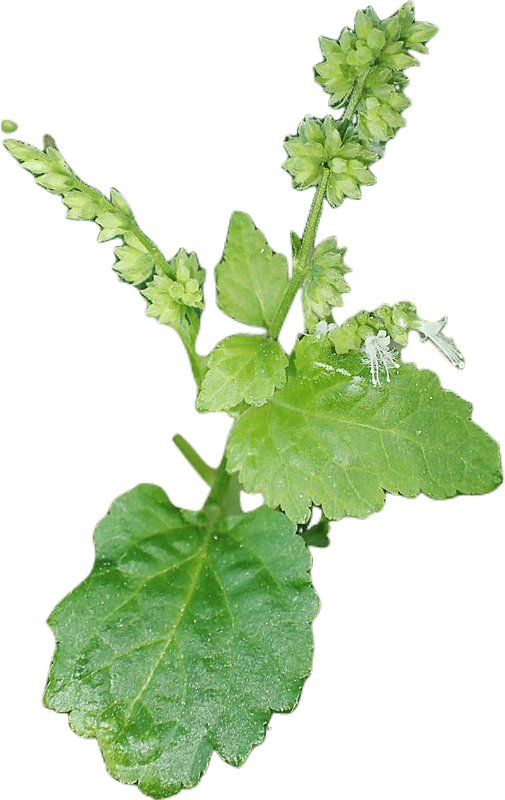

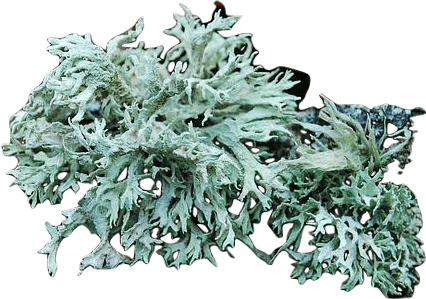
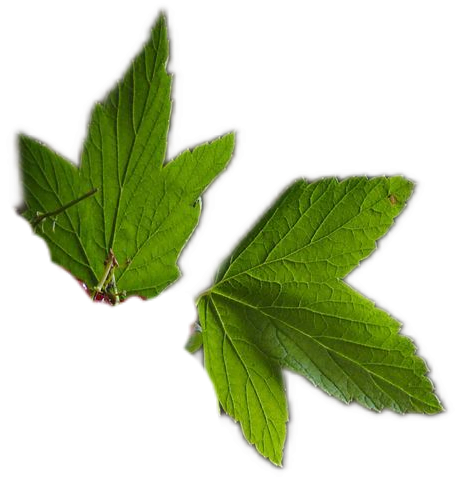
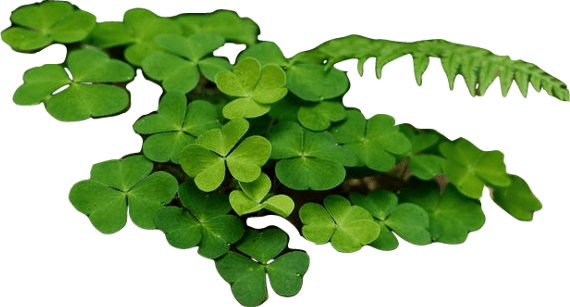
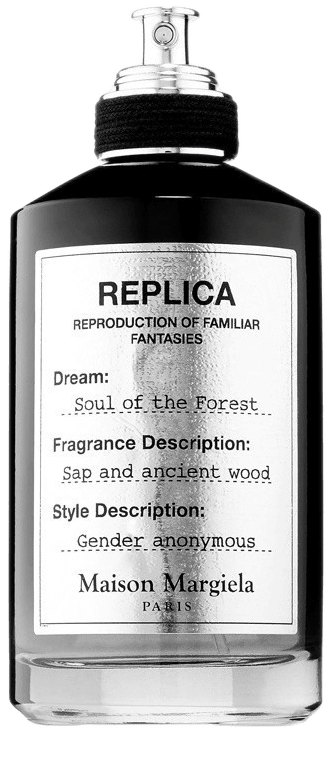
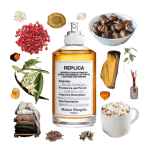
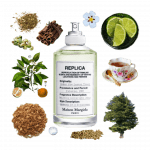
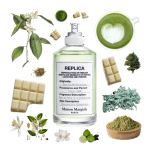
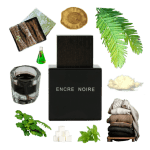
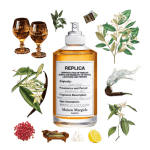
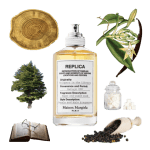
2 thoughts on “Soul of the Forest Eau de Parfum by Maison Martin Margiela Review”